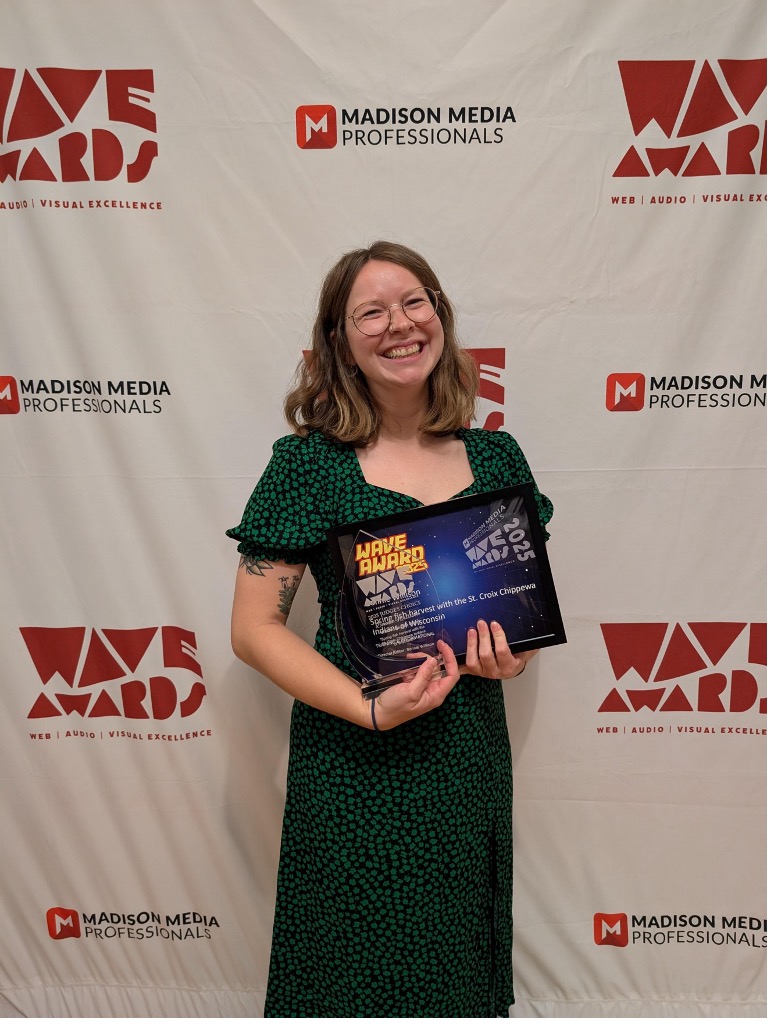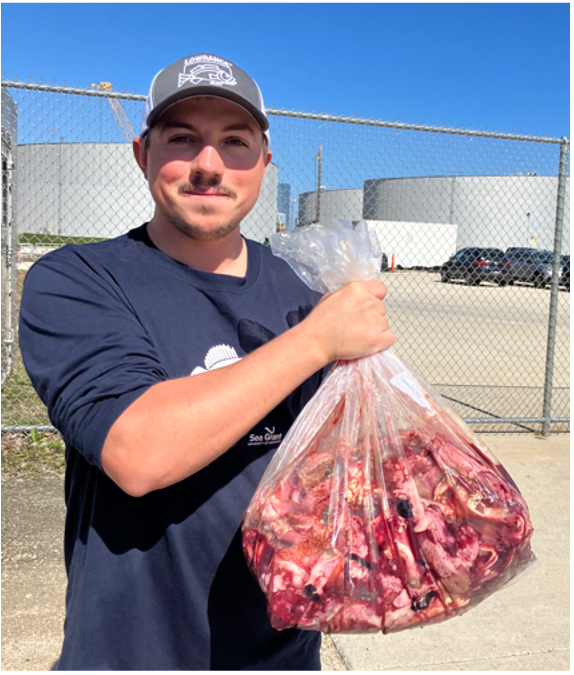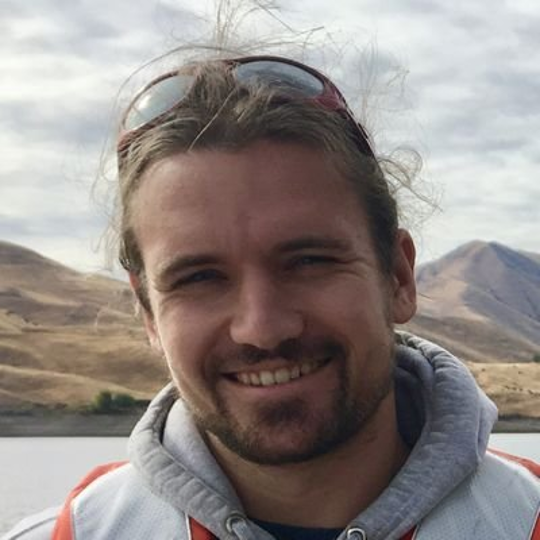The team made it to the third round of the national competition on May 3, falling valiantly to a team from California. “We had a great time in Seattle. The students from Spring Valley were amazing. I really couldn’t say enough about what a great group of kids traveled with us. Every day, they were excited and engaged in the activities that we had arranged,” said Liz Sutton who has traveled with the team to Seattle. Sutton is the liaison to the National Ocean Sciences Bowl and is based at the school of Continuing Education at UW-Milwaukee.
The coach, four seniors and one sophomore who make up the 2014 Lake Sturgeon Bowl winning team have a trademark look—plaid flannel shirts. The look will serve them well as they head to Seattle, the home of grunge, for the National Ocean Sciences Bowl (NOSB) May 1 – 4.
The group hails from Spring Valley High School (enrollment roughly 200) in Pierce County. Throughout the team’s years of participating in the annual state qualifying round for the NOSB—six years as second-place finishers and the last two as champs—the flannel shirts have been on their backs as a de facto uniform. In that time, they could not have known that in 2014 they’d be competing in rocker Kurt Cobain’s musical epicenter. Perhaps clad in their Cobain-homage threads, Spring Valley will get an extra dose of luck.
Beyond Luck
Luck, naturally, would be nice, but the students also have lots of preparation on their side as they ready to take on 21 teams from around the country. “Most of the competitors become obsessed with all things ocean-related, reading books and watching documentaries independently over the summer. Some summers, I have had several students take ocean-related summer camps. We start practicing as a team in the end of September and work consistently until our competition ends,” said Coach Michele Huppert, a National Board Certified Science Teacher for both middle- and high-schoolers.
Huppert said the students devote long hours during the school year, in addition to other responsibilities. “We meet two to three times each week for one to two hours each time, depending on if we meet before or after school. All the students are also in music, sports, student council, etc., so it can be tough to carve out meeting times.” She continued, “Students put in more time than this, however. Each meeting is led by a team member who has volunteered to become the expert in a specific topic (say marine sediments, thermohaline circulation, or remote sensing satellite technology) and develop activities to teach the material to the rest of the team. I mostly work as a facilitator, suggesting study resources, filling in gaps when they struggle to understand what they are learning, helping students connect new information to what they already know, and correcting any misconceptions as I notice them developing.”
From Coach to Learner Herself
As for her own development, Huppert said the Lake Sturgeon Bowl/NOSB experience has been positive. “NOSB has led me to many summer professional development opportunities that have improved my content knowledge, passion for research and teaching skills, which actually benefits all my students. I have applied to and participated in the Maury Project at the U.S. Naval Academy, Teacher Aquanauts at UW-Milwaukee, COSEE Lake Superior Shipboard and Shoreline Science, AMS Datastreme Ocean and Climate courses, UW-Milwaukee Physics Department’s Research Experience for Teachers, and most recently the National Geographic Grosvenor Fellowship which will take me on an Arctic Expedition to Norway, Svalbard, Greenland and Iceland this summer.
“All of these activities make me a better, more educated, more enthusiastic learner and teacher. Beyond the dozen or so students who work hard to earn a position on the NOSB team each year, all my students see how excited the NOSB team and I are about science and the ocean, and that passion is contagious!,” she said.
Spring Valley will be gunning for last year’s winners from California. Huppert said her team’s goal is to make it into the final eight. Regardless of their placement, she said, the effort is a winner. “The best aspect of NOSB is the ‘big picture’ understanding that students develop when studying ocean systems. They see the connections between all branches of science, geography, technology and the politics of decision-making when it comes to resource management. Students get to practice using their foundational knowledge from physics, chemistry, geology and biology to deeply understand real-world issues like ocean acidification, fisheries management or dead zones. They see how their personal actions in Wisconsin—about as far as one can be from an ocean—do impact the world ocean. They are inspired to investigate topics that would rarely be taught in a general high school curriculum, such as shipping and navigation technologies, satellite technologies or marine policy.”
Feeding STEM
Once out of high school, Huppert said Spring Valley students do pursue STEM careers. In fact, she said, “Every single NOSB alumni on the Spring Valley team in the past six years is currently pursuing a STEM career, many with a water focus or connections.”
Wisconsin Sea Grant is a longtime supporter of the Lake Sturgeon Bowl, providing volunteers, team and coach training, research materials and funding.
The National Ocean Sciences Bowl is managed by the Consortium for Ocean Leadership, representing leading oceanographic institutions, universities and aquaria. The competition involves rapid-fire buzzer questions and conducting a mock ocean science policy briefing.





